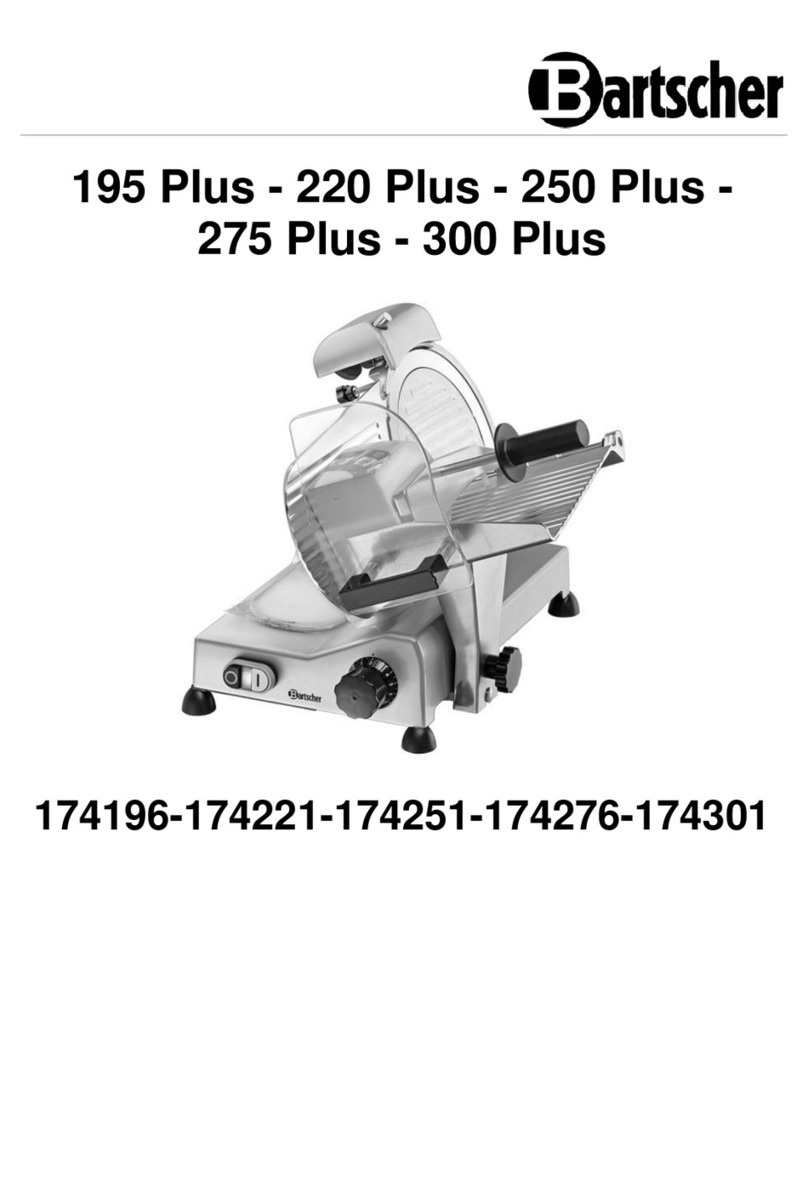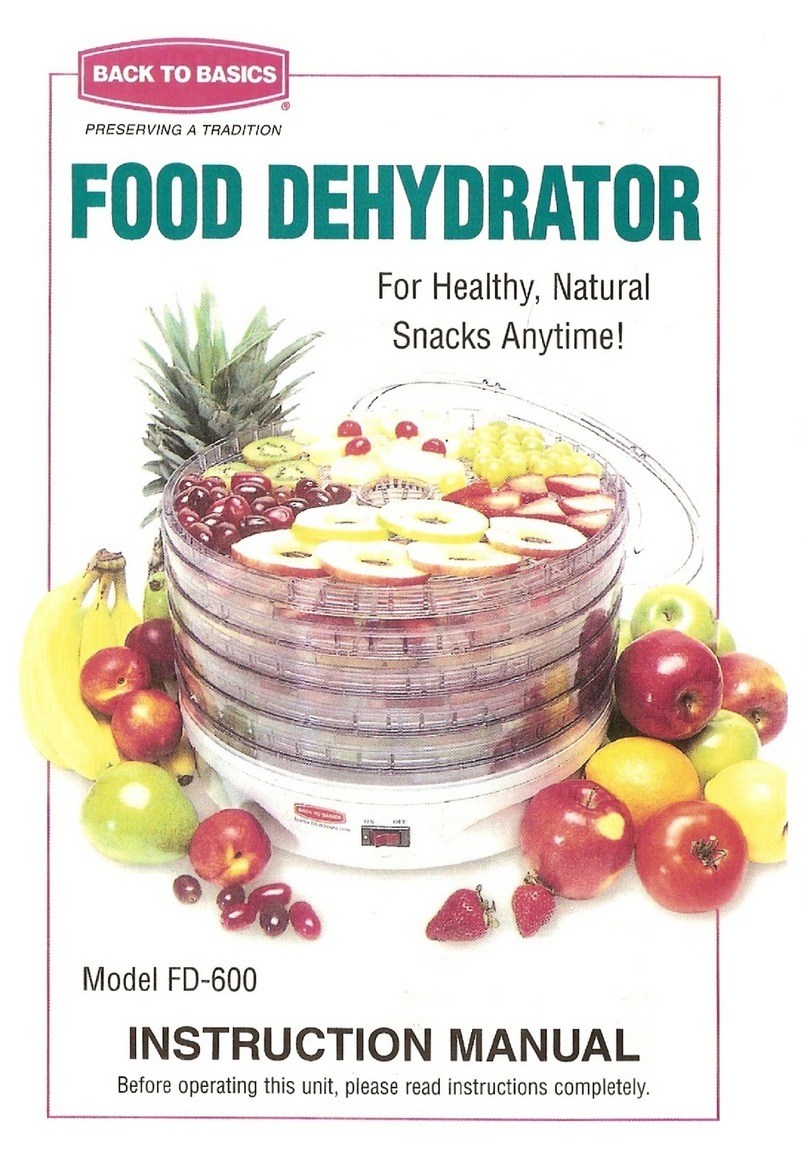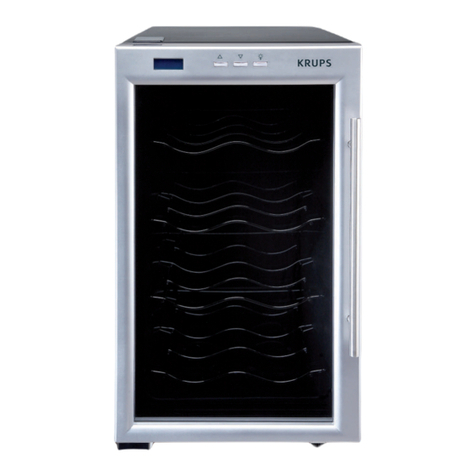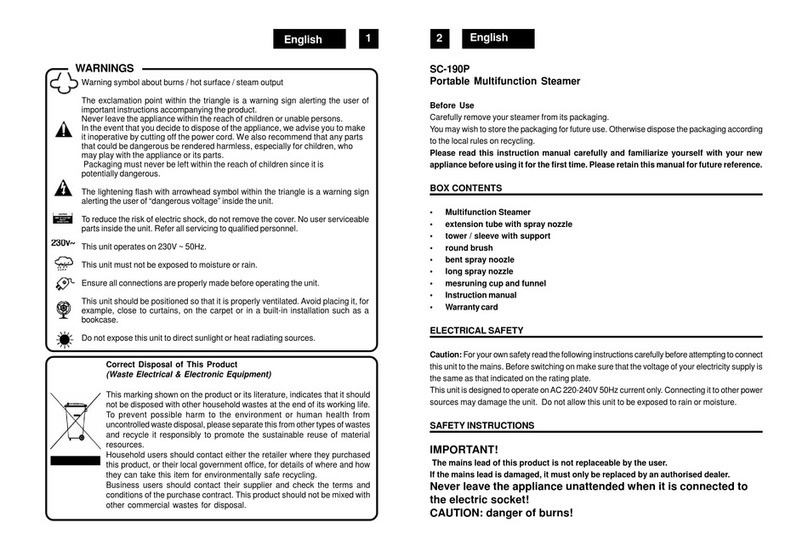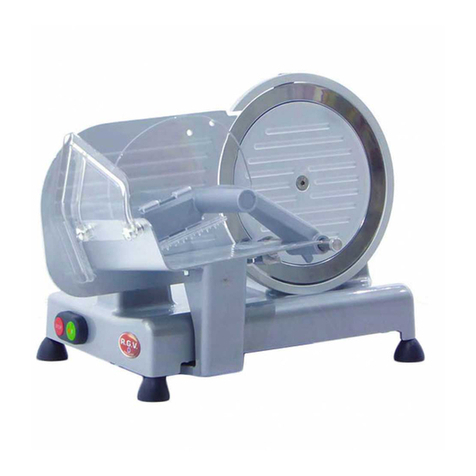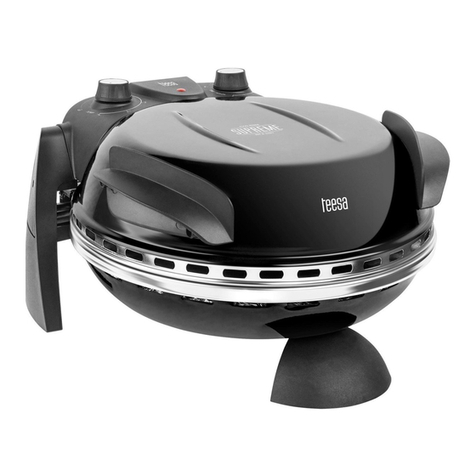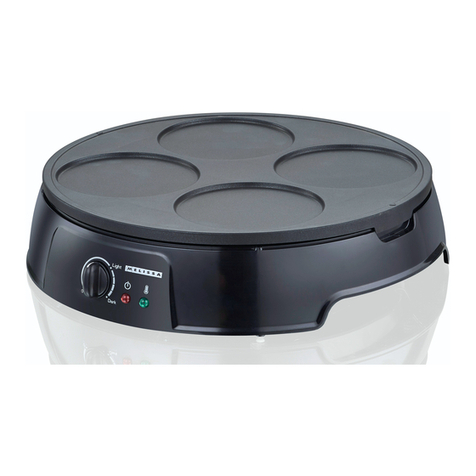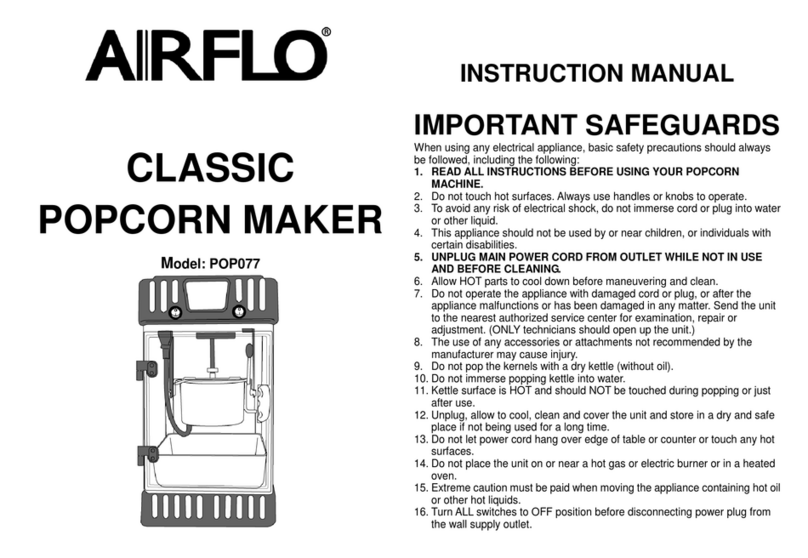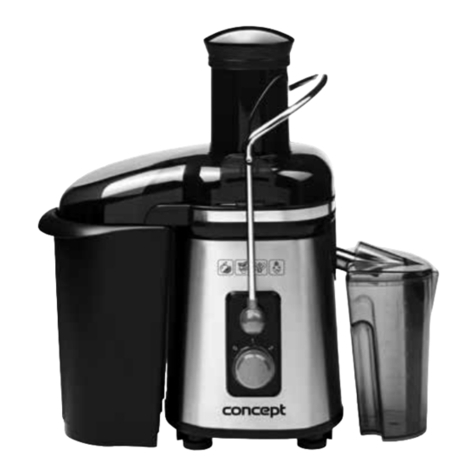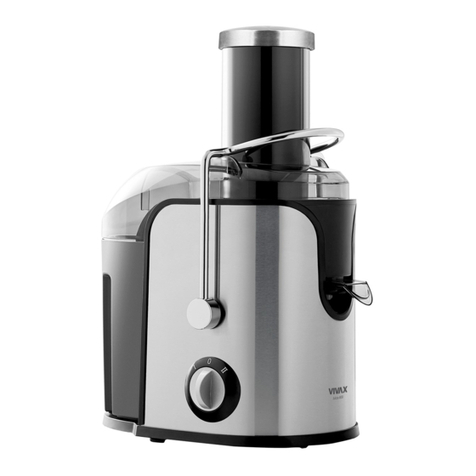STX DEHYDRA 800W-XLS User manual


~ Notes ~
___________________________________________
___________________________________________
___________________________________________
___________________________________________
___________________________________________
___________________________________________
___________________________________________
___________________________________________
___________________________________________
___________________________________________
___________________________________________
___________________________________________
___________________________________________
___________________________________________
___________________________________________
___________________________________________
___________________________________________
___________________________________________
___________________________________________
___________________________________________
___________________________________________
___________________________________________
___________________________________________
___________________________________________
___________________________________________
___________________________________________
___________________________________________
___________________________________________
8
STX DEHYDRA STX 800W FOOD DEHYDRATOR
OPERATING MANUAL
Table of Contents Page
Introduction ……………………………………………………………………………….………. 1
Dehydration ………………………………………………………………………………………. 1
Important Safeguards ……………………………………………………………………...... 2
Preparation of Food (Pre-Treatment) …………………………………………………. 2
Operating Instructions ……………………………………………………………………….. 3
Food Storage ……………………………………………………………………………………… 4
Reconstitution ……………………………………………………………………………………. 4
Food Drying Guide ………………………………………………………………................. 4
Cleaning ……………………………………………………………………………………………… 7
Reviewing The Dehydrating Process …………………………………………………... 7
Notes ……………………..………………………………………………………………………….. 8
______________________________________________________________
Introduction
Drying food for preservation dates all the way back to The Ancient Egyptians. The
Spaniards were the first explorers known to use dehydration to prep food for their
expeditions. This method was used extensively in the days of the Lewis and Clark
expeditions as they charted to the expanse of the Louisiana Land Purchase. Buffalo,
elk and deer were plentiful, but their success relied heavily upon the proper use of
this preserving method.
The information in this manual is intended to help you get the best results for this
equipment. Please read this booklet carefully and contact The Mercantile Station if
you have any questions.
Dehydration
There are no exact rules that apply to food dehydration because your results can be
affected by room temperature, relative humidity and moisture levels in the food
that you are drying. To become proficient it will be necessary to experiment with
your drying techniques. If you use too much heat, food may harden on the outside
while still being moist inside. However, with too little heat, your drying times will be
very long, with a little practice you will be creating tasty, ready to eat snacks in no
time.
1

Important Safeguards
1) Read ALL of these instructions thoroughly before using your dehydrator.
2) Save these instructions for future reference.
3) Never leave your dehydrator unattended at any time.
4) Supervision is required if the unit will be used around children/pets.
5) Only for use indoors in a clean, dry, well ventilated location, free of flammable
fumes and/or objects and/or humidifiers/products that cause condensation.
6) This unit gets hot. Do not touch surfaces while operating.
7) Continuous operations above 155*F is not recommended as surface will become
very hot and in some cases melt/warp the dehydrator trays.
8) This unit will scratch household surfaces.
9) Do not use if the cord or controls have been damages in any way. Contact the
Manufacturer before attempting to make any repairs.
10) Do not use utensils inside the unit.
11) Turn off the unit before plugging into or unplugging from any electrical outlet.
12) Keep unit unplugged when not in use.
13) Allow unit to cool before cleaning.
14) NEVER immerse unit or cord in water or other liquids.
15) NEVER plug unit into a damages electrical outlet.
16) DO NOT allow the cord to contact the edge of a counter, table or hot surface.
17) The use of attachments or accessories is not recommended by the manufacturer
and will VOID THE WARRANTY.
18) DO NOT attempt to move the unit while it is in operation.
19) READ THE BACK COVER OF THIS MANUAL FOR ADDITIONAL SAFETY RULES AND
PRECAUTIONS.
Preparations of Foods (Pre-Treatment)
For best results, select the freshest foods available to dehydrate. Note that immature fruits
and vegetables do not have as much color and flavor as do those that are fully matured.
Foods should be dehydrates as soon after purchase as possible. Foods high in sugar such as
apples, pears, peaches, and bananas are prone to darken as a result of oxidation of the
sugars. Below are some pre-treatments that will help reduce this oxidation effect.
Lemon and Pineapple Juice are natural antioxidants. Place the slices in the juice for a few
minutes. Remove, drain and place on the dehydrator shelf. For extra flavor, try sprinkling
with cinnamon, Jello powders or other sweeteners.
Ascorbic acid mix, a form of vitamin C which is available at most health food stores, comes in
either tablet or powder form. Use about 2-3 tablespoons of powder or ground tablets per 1
quart of water. Stir to completely dissolve powder. Place fruit into the solution for 2-3
minutes. Remove, drain and place on the dehydrator shelf.
2
Sodium Bisulfate can be purchased at your local pharmacy. If you or anyone who will be
eating the food has any known chemical allergies, you should check with you physician
before using this chemical. Be certain to ask for food grade (SAFE) product only. Mix 1
teaspoon of sodium bisulfate in 1 quart of water. Dip the slices in the solution for a few
minutes. Remove, drain and place on the dehydrator shelf.
Cleaning
Wipe off both exterior and interior surface of the unit with a damp cloth and mild dish soap.
The dehydrator shelves are dishwasher safe. Be certain ALL parts are completely dry before
plugging in and powering up the product.
NEVER IMMERSE THE UNIT OR POWER CORD IN WATER OR OTHER LIQUIDS!!!
Reviewing the Dehydrating Process
To obtain the best results:
1) Use high quality foods: the better the food the better the result.
2) Wash food, use clean utensils and keep work area clean.
3) Pre-treat foods to prevent discoloration.
4) Do not overlap food on shelves.
5) Drying times will vary depending on food thickness, moisture in the food, relative
humidity and temperature of the room.
6) Cool food before testing for dryness.
7) Let food condition in a clean, dry, ventilated area for a week before placing them in
air tight containers.
8) Reconstitute as needed.
9) Only dehydrate food items. Do not dehydrate nonfood items or items that can
combust or cause fire. Be sure the food items you dehydrate are suitable for dehydrating.
10) Last but not least, Enjoy!
Contact Info:
The Mercantile Station 2
2159 Magnum Circle
Lincoln, Nebraska 68522
Phone: (402) 742-2586
Email: Mercantiletwo@aol.com
7

Fruits at 135* F
Food
Preparation
Test
Time
Apples
Wash, core and peel if desired.
Cut into ¼” slices. Dust with
cinnamon if desired.
Pliable
7-15 hours
Apricots
Wash, halve and remove pit.
Slice if desired and dry skin
side down.
Pliable
21-29 hours
Bananas
Wash, peel and slice 1/8” slices
Pliable
7-10 hours
Figs
Wash, cut out blemishes,
quarter. Dry skin side down.
Pliable
22-30 hours
Kiwi
Wash, peel and slice in ¼”
slices.
Crisp
8-15 hours
Nectarines
Wash halve and remove pit.
Slice if desired and dry skin
side down.
Pliable
8-17 hours
Peaches
Wash, halve and remove pit.
Slice if desired and dry skin
side down.
Pliable
8-16 hours
Pears
Wash, core and peel if desired
and dry skin side down.
Pliable
8-16 hours
Pineapple
Peel, remove fibrous eyes,
remove core. Cut into ¼” slices
or wedges.
Pliable
11-18 hours
Rhubarb
Wash, cut into 1” lengths.
Pliable
6-10 hours
Strawberries
Wash, cut our caps, sliced ¼”
thick.
Crisp
7-15 hours
Watermelon
Cut off rind, cut into wedges
and remove seeds.
Pliable
8-10 hours
Jerky at 145* F
Food
Preparation
Test
Time
Jerky
Use lean meat and remove as much fat
as possible. Fat tends to go bad with
time. Cut into uniform ¼” thick or less
slices. Do not overlap on shelves while
drying.
Pliable
3-4 hours Meat
temp should reach
145-150* F
6
Preparation of Food (Pre-Treatment), cont’d
Blanching is used primarily to prepare fruits and vegetable for dehydrating that have
skins that will toughen when drying. This process helps lock in the color and flavor as
well as soften the skin of grapes, cherries, prunes and plums. There are two
blanching methods: water and steam.
Water Blanching – Fill a large pan about half full of water. Bring water to a
rolling boil. Use tongs to place food directly into the water, cover the pot and
boil (Blanch) for about 3 minutes. Remove using tongs, drain and place on
dehydrator shelf.
Steam Blanching -Using a steamer pot such as used in Chinese cooking,
put 2-3 inches of water in the pot and bring to a boil. Place food into the
steamer basket, place in pan and cover. Steam food for about 5 minutes.
Remove and place on dehydrator shelf.
Operating Instructions
For best results. Read all of the instruction manual first.
1) Examine the carton and the unit for any damage that may have occurred
during shipping. Contact the seller to report any damages.
2) Fill out the guarantee card with date of purchase, where purchased, name
and address of where the product was originally shipped to for verification.
3) Make sure the power switch is turned off. Place the unit on a well-ventilated,
clean, dry surface away from children and pets. Plug into an undamaged
electrical outlet. DO NOT use an extension cord with this dehydrator.
4) Turn the unit on. The unit will begin to heat up.
5) Heat the unit to 90* F for 45 minutes to make sure the unit is functioning
properly.
6) If the unit stops for any reason, turn off, unplug and then repeat steps 3 and
4. If the unit does not operate normally, turn off, unplug and call 402-742-
2586.
7) Follow your recipe to prepare the food that you wish to dehydrate.
8) Using oven mitts, slide the dehydrator trays out of the unit and load the
product to be dehydrated onto the trays. Do not overlap the food when
placing onto trays, keep all food inside the recessed tray area.
9) Using both hands for maximum stability, slide the dehydrator trays back into
the unit. Do not push too hard. Trays will hitch or lock into place.
10) Set temperature by turning the knob on top of the unit. Monitor the internal
temperature and adjust as needed. Do NOT leave unattended!
3

Food Storage
Dried foods should be allowed to condition before being placed into a storage
container. Generally, let stand about 1 week in a dry, well ventilated and protected
are. The conditioning time allows for further drying and removes most of the
remaining moisture in the food. Dried food can be placed into clean, dry, insect
resistant containers, preferably glass jars. Heavy gauge plastic freezer bags can also
be used. Eliminate as much air as possible before sealing the bag.
When properly used, vacuum sealers provide ideal storage. The less air present, the
less potential for the formation of molds. Stored foods should be checked monthly for
insects and mold. If mold is present, discard the whole container and start over.
Double checking with your next batch, to make sure that moisture levels in food are
low and container is air tight.
Reconstitution
Dried foods do not need to be reconstituted for consumption. Many people prefer to
want them in their dried state. If you want to reconstitute your food, here are some
basic guidelines. Soak food in unsalted water for 3-7 minutes and then prepare as
usual. If you are boiling them, use the same water they soaked in to preserve
nutrients.
If you plan to soak foods for more than 1 hour, they should be placed in the
refrigerator to prevent bacterial growth. One cup of dried vegetables will reconstitute
to about 2 cups. One cup of fruit will reconstitute to about 1 ½ cups. Reconstitute
times will vary depending on the thickness and the water temperature used. Warm
water will speed reconstitution but may result in flavor loss.
Food Drying Guide
The following charts are guidelines for the preservation of various fruits, vegetables,
and meats. Drying times will vary depending on the room temperature, relative
humidity and moisture levels in the food you are drying. If the moisture level is low,
the drying time will be on the high end of the range.
Keep in mind that drying times are also affected by the amount of food placed on the
shelves. Over loading the shelves will slow the drying times and may produce poor
results. When dehydrating foods, it is important to check on the dryness of the
product. If the product is not thoroughly dried, mold may form during storage (See
Food Storage). To test for dryness, remove a piece of food from the dehydrator and
allow to cool to room temperature. Bend and tear the piece to check for internal
moisture.
4
Vegetables at 125*F
Food
Preparation
Test
Time
Asparagus
Wash and cut into 1” pieces
Crunchy
4-6 hours
Beans, Greens
Or waxed
Wash, remove ends and cut into 1”
pieces or French style
Crunchy
9-12 hours
Beets
Remove ½” of the top, scrub
thoroughly, steam blanch until
tender. Peel and cut into ¼” thick
slices
Pliable
9-12 hours
Broccoli
Wash and trim. Cut stems into ¼”
pieces. Dry florets whole.
Crunchy
10-14
hours
Cabbage
Wash and trim. Cut into 1/8” strips.
Crunchy
8-11 hours
Carrots
Wash and trim tops. Peel or scrape
if desired. Cut into 1/8” thick slices.
Pliable
7-11 hours
Celery
Wash, separate leaves and stalks.
Cut stalks into ¼” strips.
Crunchy
3-10 hours
Corn
Shuck corn and trim silk. Steam
until milk is set. Cut kernels from
cob and spread on plastic screen.
Stir several times during drying.
Crunchy
7-10 hours
Cucumber
Wash and trim. Cut into 1/8” slices.
Pliable
4-8 hours
Eggplant
Wash and peel. Cut into ¼” slices.
Pliable
4-8 hours
Mushroom
Wash and cut into 3/8” slices.
Pliable
4-7 hours
Parsnips
Scrub thoroughly, steam blanch
until tender. Peel if desired and cut
into 3/8” thick slices.
Pliable /
Tough
7-11 hours
Peppers
Wash and remove stems, seeds
and white section. Pat dry. Cut into
¼” thick strips or rings.
Pliable
4-8 hours
Potatoes
Use new potatoes. Wash, peel if
desired. Steam blanch 4-6 minutes,
Cut French style ¼” slices, 1/8”
thick circles or grate.
Crunchy /
Pliable
7-13 hours
Summer
Squash
Wash and peel. Cut into ¼” slices.
Pliable
10-14
hours
Tomatoes
Wash and remove stems. Slice into
¼” circles. For cherry tomatoes,
slice in half, dry skin side down.
Pliable
5-9 hours
Zucchini
Wash. Peel if desired. Cut into ¼”
slices or chips.
Crunchy
7-11 hours
5

Food Storage
Dried foods should be allowed to condition before being placed into a storage
container. Generally, let stand about 1 week in a dry, well ventilated and protected
are. The conditioning time allows for further drying and removes most of the
remaining moisture in the food. Dried food can be placed into clean, dry, insect
resistant containers, preferably glass jars. Heavy gauge plastic freezer bags can also
be used. Eliminate as much air as possible before sealing the bag.
When properly used, vacuum sealers provide ideal storage. The less air present, the
less potential for the formation of molds. Stored foods should be checked monthly for
insects and mold. If mold is present, discard the whole container and start over.
Double checking with your next batch, to make sure that moisture levels in food are
low and container is air tight.
Reconstitution
Dried foods do not need to be reconstituted for consumption. Many people prefer to
want them in their dried state. If you want to reconstitute your food, here are some
basic guidelines. Soak food in unsalted water for 3-7 minutes and then prepare as
usual. If you are boiling them, use the same water they soaked in to preserve
nutrients.
If you plan to soak foods for more than 1 hour, they should be placed in the
refrigerator to prevent bacterial growth. One cup of dried vegetables will reconstitute
to about 2 cups. One cup of fruit will reconstitute to about 1 ½ cups. Reconstitute
times will vary depending on the thickness and the water temperature used. Warm
water will speed reconstitution but may result in flavor loss.
Food Drying Guide
The following charts are guidelines for the preservation of various fruits, vegetables,
and meats. Drying times will vary depending on the room temperature, relative
humidity and moisture levels in the food you are drying. If the moisture level is low,
the drying time will be on the high end of the range.
Keep in mind that drying times are also affected by the amount of food placed on the
shelves. Over loading the shelves will slow the drying times and may produce poor
results. When dehydrating foods, it is important to check on the dryness of the
product. If the product is not thoroughly dried, mold may form during storage (See
Food Storage). To test for dryness, remove a piece of food from the dehydrator and
allow to cool to room temperature. Bend and tear the piece to check for internal
moisture.
4
Vegetables at 125*F
Food
Preparation
Test
Time
Asparagus
Wash and cut into 1” pieces
Crunchy
4-6 hours
Beans, Greens
Or waxed
Wash, remove ends and cut into 1”
pieces or French style
Crunchy
9-12 hours
Beets
Remove ½” of the top, scrub
thoroughly, steam blanch until
tender. Peel and cut into ¼” thick
slices
Pliable
9-12 hours
Broccoli
Wash and trim. Cut stems into ¼”
pieces. Dry florets whole.
Crunchy
10-14
hours
Cabbage
Wash and trim. Cut into 1/8” strips.
Crunchy
8-11 hours
Carrots
Wash and trim tops. Peel or scrape
if desired. Cut into 1/8” thick slices.
Pliable
7-11 hours
Celery
Wash, separate leaves and stalks.
Cut stalks into ¼” strips.
Crunchy
3-10 hours
Corn
Shuck corn and trim silk. Steam
until milk is set. Cut kernels from
cob and spread on plastic screen.
Stir several times during drying.
Crunchy
7-10 hours
Cucumber
Wash and trim. Cut into 1/8” slices.
Pliable
4-8 hours
Eggplant
Wash and peel. Cut into ¼” slices.
Pliable
4-8 hours
Mushroom
Wash and cut into 3/8” slices.
Pliable
4-7 hours
Parsnips
Scrub thoroughly, steam blanch
until tender. Peel if desired and cut
into 3/8” thick slices.
Pliable /
Tough
7-11 hours
Peppers
Wash and remove stems, seeds
and white section. Pat dry. Cut into
¼” thick strips or rings.
Pliable
4-8 hours
Potatoes
Use new potatoes. Wash, peel if
desired. Steam blanch 4-6 minutes,
Cut French style ¼” slices, 1/8”
thick circles or grate.
Crunchy /
Pliable
7-13 hours
Summer
Squash
Wash and peel. Cut into ¼” slices.
Pliable
10-14
hours
Tomatoes
Wash and remove stems. Slice into
¼” circles. For cherry tomatoes,
slice in half, dry skin side down.
Pliable
5-9 hours
Zucchini
Wash. Peel if desired. Cut into ¼”
slices or chips.
Crunchy
7-11 hours
5

Fruits at 135* F
Food
Preparation
Test
Time
Apples
Wash, core and peel if desired.
Cut into ¼” slices. Dust with
cinnamon if desired.
Pliable
7-15 hours
Apricots
Wash, halve and remove pit.
Slice if desired and dry skin
side down.
Pliable
21-29 hours
Bananas
Wash, peel and slice 1/8” slices
Pliable
7-10 hours
Figs
Wash, cut out blemishes,
quarter. Dry skin side down.
Pliable
22-30 hours
Kiwi
Wash, peel and slice in ¼”
slices.
Crisp
8-15 hours
Nectarines
Wash halve and remove pit.
Slice if desired and dry skin
side down.
Pliable
8-17 hours
Peaches
Wash, halve and remove pit.
Slice if desired and dry skin
side down.
Pliable
8-16 hours
Pears
Wash, core and peel if desired
and dry skin side down.
Pliable
8-16 hours
Pineapple
Peel, remove fibrous eyes,
remove core. Cut into ¼” slices
or wedges.
Pliable
11-18 hours
Rhubarb
Wash, cut into 1” lengths.
Pliable
6-10 hours
Strawberries
Wash, cut our caps, sliced ¼”
thick.
Crisp
7-15 hours
Watermelon
Cut off rind, cut into wedges
and remove seeds.
Pliable
8-10 hours
Jerky at 145* F
Food
Preparation
Test
Time
Jerky
Use lean meat and remove as much fat
as possible. Fat tends to go bad with
time. Cut into uniform ¼” thick or less
slices. Do not overlap on shelves while
drying.
Pliable
3-4 hours Meat
temp should reach
145-150* F
6
Preparation of Food (Pre-Treatment), cont’d
Blanching is used primarily to prepare fruits and vegetable for dehydrating that have
skins that will toughen when drying. This process helps lock in the color and flavor as
well as soften the skin of grapes, cherries, prunes and plums. There are two
blanching methods: water and steam.
Water Blanching – Fill a large pan about half full of water. Bring water to a
rolling boil. Use tongs to place food directly into the water, cover the pot and
boil (Blanch) for about 3 minutes. Remove using tongs, drain and place on
dehydrator shelf.
Steam Blanching -Using a steamer pot such as used in Chinese cooking,
put 2-3 inches of water in the pot and bring to a boil. Place food into the
steamer basket, place in pan and cover. Steam food for about 5 minutes.
Remove and place on dehydrator shelf.
Operating Instructions
For best results. Read all of the instruction manual first.
1) Examine the carton and the unit for any damage that may have occurred
during shipping. Contact the seller to report any damages.
2) Fill out the guarantee card with date of purchase, where purchased, name
and address of where the product was originally shipped to for verification.
3) Make sure the power switch is turned off. Place the unit on a well-ventilated,
clean, dry surface away from children and pets. Plug into an undamaged
electrical outlet. DO NOT use an extension cord with this dehydrator.
4) Turn the unit on. The unit will begin to heat up.
5) Heat the unit to 90* F for 45 minutes to make sure the unit is functioning
properly.
6) If the unit stops for any reason, turn off, unplug and then repeat steps 3 and
4. If the unit does not operate normally, turn off, unplug and call 402-742-
2586.
7) Follow your recipe to prepare the food that you wish to dehydrate.
8) Using oven mitts, slide the dehydrator trays out of the unit and load the
product to be dehydrated onto the trays. Do not overlap the food when
placing onto trays, keep all food inside the recessed tray area.
9) Using both hands for maximum stability, slide the dehydrator trays back into
the unit. Do not push too hard. Trays will hitch or lock into place.
10) Set temperature by turning the knob on top of the unit. Monitor the internal
temperature and adjust as needed. Do NOT leave unattended!
3

Important Safeguards
1) Read ALL of these instructions thoroughly before using your dehydrator.
2) Save these instructions for future reference.
3) Never leave your dehydrator unattended at any time.
4) Supervision is required if the unit will be used around children/pets.
5) Only for use indoors in a clean, dry, well ventilated location, free of flammable
fumes and/or objects and/or humidifiers/products that cause condensation.
6) This unit gets hot. Do not touch surfaces while operating.
7) Continuous operations above 155*F is not recommended as surface will become
very hot and in some cases melt/warp the dehydrator trays.
8) This unit will scratch household surfaces.
9) Do not use if the cord or controls have been damages in any way. Contact the
Manufacturer before attempting to make any repairs.
10) Do not use utensils inside the unit.
11) Turn off the unit before plugging into or unplugging from any electrical outlet.
12) Keep unit unplugged when not in use.
13) Allow unit to cool before cleaning.
14) NEVER immerse unit or cord in water or other liquids.
15) NEVER plug unit into a damages electrical outlet.
16) DO NOT allow the cord to contact the edge of a counter, table or hot surface.
17) The use of attachments or accessories is not recommended by the manufacturer
and will VOID THE WARRANTY.
18) DO NOT attempt to move the unit while it is in operation.
19) READ THE BACK COVER OF THIS MANUAL FOR ADDITIONAL SAFETY RULES AND
PRECAUTIONS.
Preparations of Foods (Pre-Treatment)
For best results, select the freshest foods available to dehydrate. Note that immature fruits
and vegetables do not have as much color and flavor as do those that are fully matured.
Foods should be dehydrates as soon after purchase as possible. Foods high in sugar such as
apples, pears, peaches, and bananas are prone to darken as a result of oxidation of the
sugars. Below are some pre-treatments that will help reduce this oxidation effect.
Lemon and Pineapple Juice are natural antioxidants. Place the slices in the juice for a few
minutes. Remove, drain and place on the dehydrator shelf. For extra flavor, try sprinkling
with cinnamon, Jello powders or other sweeteners.
Ascorbic acid mix, a form of vitamin C which is available at most health food stores, comes in
either tablet or powder form. Use about 2-3 tablespoons of powder or ground tablets per 1
quart of water. Stir to completely dissolve powder. Place fruit into the solution for 2-3
minutes. Remove, drain and place on the dehydrator shelf.
2
Sodium Bisulfate can be purchased at your local pharmacy. If you or anyone who will be
eating the food has any known chemical allergies, you should check with you physician
before using this chemical. Be certain to ask for food grade (SAFE) product only. Mix 1
teaspoon of sodium bisulfate in 1 quart of water. Dip the slices in the solution for a few
minutes. Remove, drain and place on the dehydrator shelf.
Cleaning
Wipe off both exterior and interior surface of the unit with a damp cloth and mild dish soap.
The dehydrator shelves are dishwasher safe. Be certain ALL parts are completely dry before
plugging in and powering up the product.
NEVER IMMERSE THE UNIT OR POWER CORD IN WATER OR OTHER LIQUIDS!!!
Reviewing the Dehydrating Process
To obtain the best results:
1) Use high quality foods: the better the food the better the result.
2) Wash food, use clean utensils and keep work area clean.
3) Pre-treat foods to prevent discoloration.
4) Do not overlap food on shelves.
5) Drying times will vary depending on food thickness, moisture in the food, relative
humidity and temperature of the room.
6) Cool food before testing for dryness.
7) Let food condition in a clean, dry, ventilated area for a week before placing them in
air tight containers.
8) Reconstitute as needed.
9) Only dehydrate food items. Do not dehydrate nonfood items or items that can
combust or cause fire. Be sure the food items you dehydrate are suitable for dehydrating.
10) Last but not least, Enjoy!
Contact Info:
The Mercantile Station 2
2159 Magnum Circle
Lincoln, Nebraska 68522
Phone: (402) 742-2586
Email: Mercantiletwo@aol.com
7
Table of contents
Popular Kitchen Appliance manuals by other brands
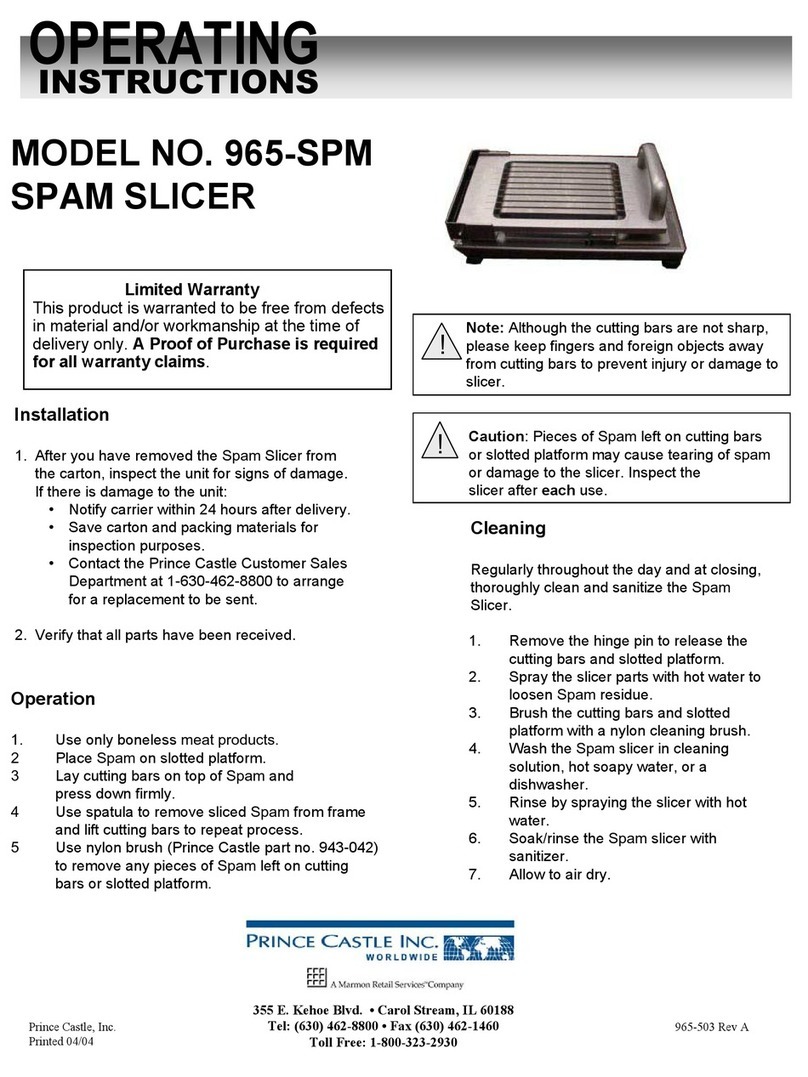
Prince Castle
Prince Castle 965-SPM operating instructions
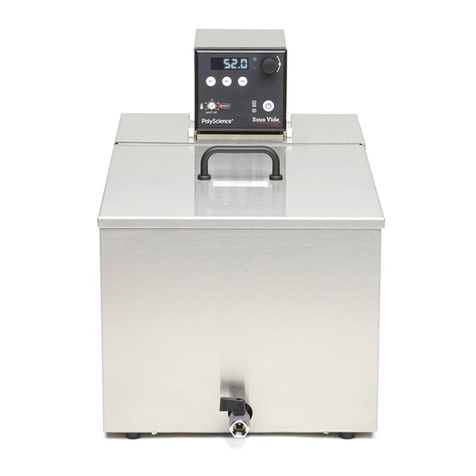
PolyScience
PolyScience SousVide Professional user guide

Bella
Bella MINI CUPCAKE MAKER Instruction manual & recipe guide
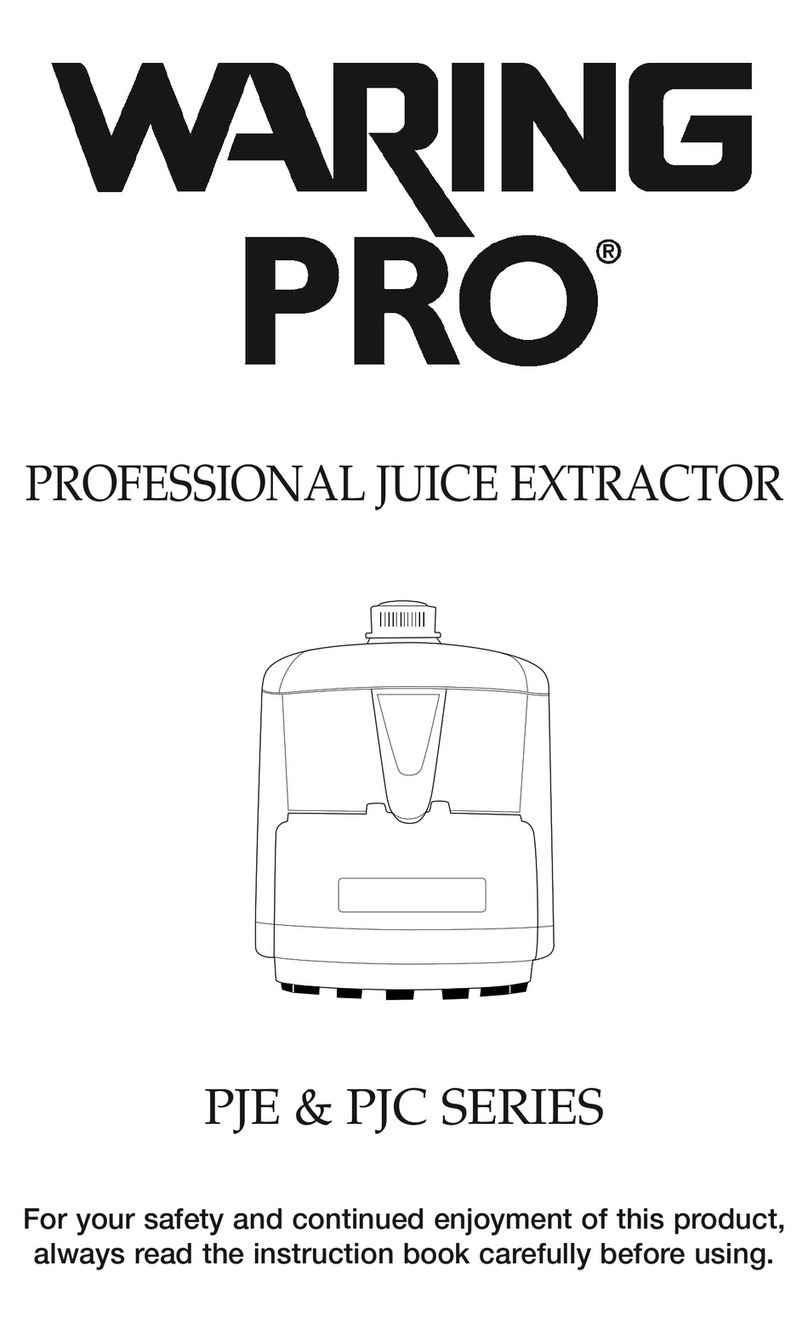
Waring
Waring PJE SERIES instructions
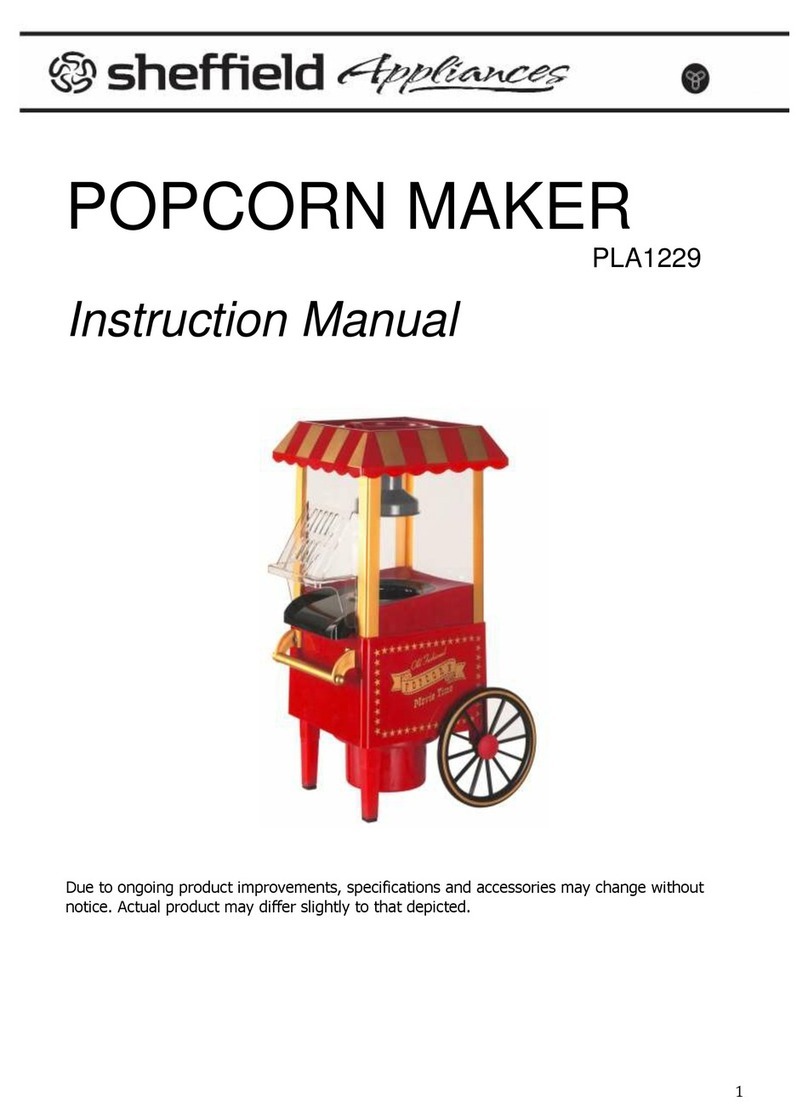
Sheffield
Sheffield PLA1229 instruction manual

Innohome
Innohome STOVE GUARD SGK4000 user manual
